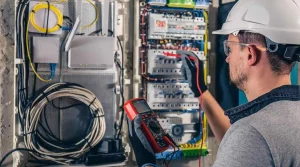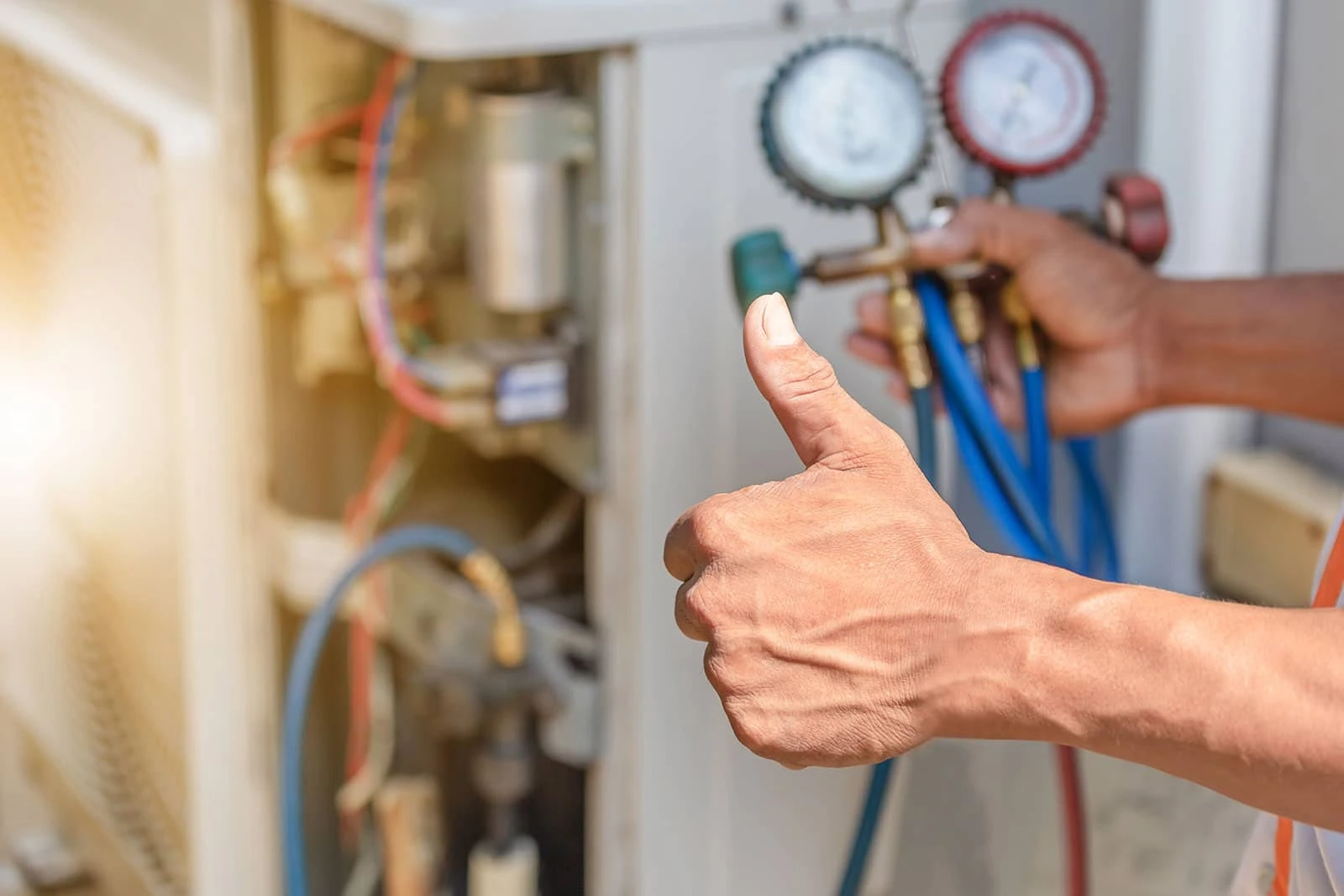The integration of electrical components in HVAC systems is critical for ensuring reliability and efficiency. Proper conductor sizing, color-coded wiring, and secure connections play an essential role in system performance. Regular inspections and maintenance of key components can prevent common electrical issues. Understanding these elements is crucial for optimizing HVAC functionality. The following sections will explore practical strategies for achieving superior integration and long-term operational success.
Key Takeaways
- Ensure high-quality, appropriately sized wiring and connectors to match system load requirements for optimal performance and reduced maintenance costs.
- Use color-coded wiring for clarity, minimizing installation errors and enhancing troubleshooting efficiency.
- Regularly inspect wiring integrity and insulation to prevent electrical faults and maintain reliable system operation.
- Employ advanced monitoring technologies to collect real-time data, improving response times and energy efficiency.
- Engage qualified technicians for routine electrical inspections and maintenance to ensure long-term system reliability and efficiency.
Understanding the Importance of HVAC Electrical Integration
While many may overlook the electrical components of HVAC systems, their integration is essential to ensuring ideal performance and efficiency. The interplay between electrical components and mechanical systems directly influences operational reliability. Proper integration facilitates effective communication between thermostats, control boards, and variable speed drives, allowing for optimized energy usage and improved system response times. Additionally, well-integrated electrical components contribute to the longevity of HVAC systems by minimizing wear and tear on motors and compressors. Understanding the significance of this integration not only enhances performance but also fosters a sense of community among professionals who prioritize efficiency and sustainability. Implementing HVAC electrical integration tips can lead to tangible benefits, reinforcing the collective commitment to excellence in the field.
Key Components to Consider for Effective Integration
Effective HVAC electrical integration relies on a combination of key components that must work in harmony to optimize performance. Understanding these components is vital for ensuring system reliability and efficiency.
- Thermostats: Essential for accurate temperature control and system communication.
- Contactors: Act as switches to manage electrical flow between components.
- Fuses and Breakers: Protect the system from overloads and electrical faults.
- Wiring and Connectors: Facilitate secure and efficient electrical connections.
These elements contribute considerably to the overall functionality of HVAC systems. By focusing on these key components, professionals can enhance the effectiveness of HVAC electrical integration tips, ultimately leading to improved operational performance and reduced maintenance costs.
Best Practices for Wiring and Connections in HVAC Systems
A well-executed wiring system is vital for the ideal performance of HVAC systems, as it directly influences electrical reliability and efficiency. To achieve optimal results, professionals should prioritize the use of high-quality, appropriately sized conductors that match the system’s load requirements. Implementing color-coded wiring enhances clarity and reduces the risk of errors during installation and maintenance. Additionally, connections must be securely fastened to minimize resistance and prevent overheating. Utilizing terminal blocks can streamline wiring organization, while adhering to local codes guarantees compliance and safety. Regular inspections of wiring integrity and insulation conditions are essential for long-term reliability. Following these best practices for wiring and connections in HVAC systems fosters enhanced performance, aligning with the overarching goal of efficient HVAC electrical integration tips.

Troubleshooting Common Electrical Issues in HVAC Units
Diagnosing electrical issues in HVAC units requires a systematic approach to identify and resolve common problems that can compromise system functionality. Technicians must be equipped with the knowledge to troubleshoot effectively, ensuring reliable performance.
- Check for blown fuses or tripped breakers
- Inspect wiring for signs of wear or loose connections
- Test capacitor and contactor functionality
- Verify thermostat calibration and settings
Addressing these points can considerably enhance the efficiency of HVAC systems. By understanding and rectifying these electrical issues, technicians contribute to the overall reliability of HVAC units. Implementing these HVAC electrical integration tips fosters a sense of belonging among professionals who endeavor for excellence in their field.
Continuous Monitoring and Maintenance for Optimal Performance
Monitoring and maintaining HVAC systems continuously is essential for guaranteeing peak performance and longevity. Implementing advanced monitoring technologies allows for real-time data collection on system parameters, enabling proactive identification of potential issues. Regular maintenance routines, including filter changes and electrical inspections, contribute considerably to operational efficiency and system reliability. Additionally, employing predictive analytics can forecast equipment failures, allowing for timely interventions that minimize downtime. Engaging qualified technicians for routine check-ups not only enhances system functionality but also fosters a sense of community among HVAC professionals committed to excellence. By adhering to these HVAC electrical integration tips, stakeholders can guarantee ideal performance, ultimately leading to increased energy efficiency and reduced operational costs, which benefits both the system and its users.
Frequently Asked Questions
What Tools Are Essential for HVAC Electrical Integration Projects?
For HVAC electrical integration projects, essential tools include multimeters, wire strippers, crimping tools, circuit testers, and diagnostic software. These instruments guarantee accurate measurements, reliable connections, and efficient troubleshooting, contributing greatly to successful project outcomes.
How Can I Ensure Safety During HVAC Electrical Work?
To guarantee safety during HVAC electrical work, one must adhere to local codes, utilize personal protective equipment, and implement lockout/tagout procedures. Regular training and thorough inspections further mitigate risks associated with electrical integration projects.
What Are the Common Mistakes in HVAC Electrical Integration?
Common mistakes in HVAC electrical integration include improper wiring connections, neglecting load calculations, overlooking safety protocols, and failing to regularly maintain systems. These errors can lead to inefficiencies, safety hazards, and increased operational costs for users.
How Often Should I Inspect HVAC Electrical Connections?
It is recommended that HVAC electrical connections should be inspected at least annually. Regular inspections help identify potential issues, ensuring operational efficiency and reliability, ultimately contributing to a more effective and longer-lasting HVAC system performance.
Can I DIY HVAC Electrical Integration or Hire a Professional?
Deciding between DIY HVAC electrical integration or hiring a professional involves evaluating one’s technical skills, knowledge of safety regulations, and the complexity of the system. Professional help often guarantees reliability and adherence to industry standards.
Conclusion
In summary, effective HVAC electrical integration is pivotal for enhancing system reliability and efficiency. By prioritizing high-quality conductors, employing color-coded wiring, and maintaining rigorous inspection and monitoring practices, HVAC professionals can mitigate common electrical issues. Routine calibration of thermostats and checks on critical components such as capacitors and contactors further optimize performance. Ultimately, a commitment to these best practices not only improves operational efficiency but also reduces long-term costs, ensuring a dependable HVAC system.
You Also Like to Read:





